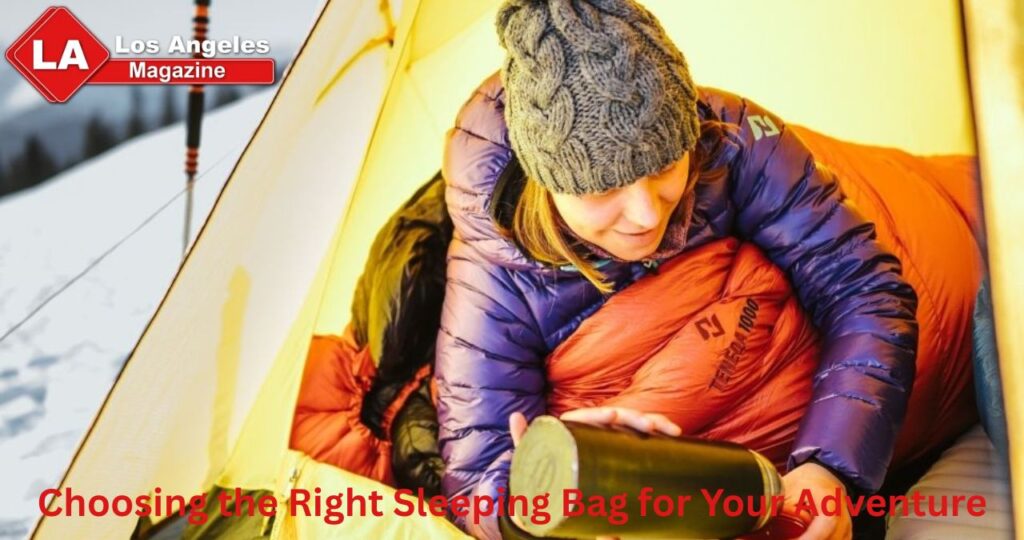Planning your next outdoor adventure? Don’t forget one of the most important items- your sleeping bag. The right sleeping bag can mean the difference between a cozy night under the stars and a long, cold night with no sleep.
With so many choices out there, it can be hard to pick the best one. In this post, we’ll share some easy tips to help you find the perfect sleeping bag.
Know Where You’re Going
The location of your trip matters when picking a sleeping bag. Are you camping in the mountains, the forest, or a desert? Each area has different nighttime temperatures.
Check the weather before you go. This helps you choose a sleeping bag that suits the climate. Colder areas need bags with more warmth.
If it’s going to be warm, you’ll need a bag with good airflow. In hot places, the wrong bag can make you sweat. Always match your sleeping bag to the trip’s location.
Understand Sleeping Bag Temperature Ratings
Sleeping bag temperature ratings tell you how cold it can get before you feel uncomfortable. Always check the label for this rating. It helps you plan for different weather.
If a bag says it’s rated for 20°F, that means it should keep you warm down to that temperature. But it’s smart to go lower than your expected temp. That way, you won’t wake up shivering.
Keep in mind that people feel temperatures differently. A warm sleeper may not need as much insulation. Others may need extra warmth even in mild weather.
Choose the Right Shape
Sleeping bags come in different shapes-mummy, rectangular, and semi-rectangular. Mummy bags are tight and keep warmth close to your body. Rectangular bags give more room but may let in cold air.
Consider how you sleep at night. If you like space, go for a wider shape. If warmth is your top need, the mummy shape is best.
Some bags are shaped for side sleepers, too. Try a few in the store before you buy. Comfort and warmth both matter.
Consider the Insulation Type
Sleeping bags use either synthetic or down insulation. Down is warmer and packs small, but costs more. Synthetic dries faster and works better in wet weather.
If you’re going somewhere dry, down is a great choice. It’s light and very warm. For rainy trips, synthetic is safer.
Some bags mix both types. These give a balance of weight and weather safety. Pick what fits your adventure best.
Think About Weight and Size
Weight is important if you plan to carry your gear. Lightweight sleeping bags for backpacking are easy to pack and carry. Heavier bags are better for car camping.
Always check how small the bag gets when packed. A compact bag saves space in your pack. Look for bags with a compression sack.
Make sure it still keeps you warm. A light bag isn’t helpful if you wake up cold. Balance weight with warmth.
Look at the Outer and Inner Fabric
Fabric can affect comfort and breathability. Look for breathable fabric that feels soft on the inside. The outside should also be tough and water-resistant.
Some sleeping bags feel noisy or sticky. Try touching the material before buying. A smooth, quiet fabric makes sleeping easier.
Also, check if the fabric is easy to clean. Dirt and sweat can build up fast. Good fabric keeps your bag fresh longer.
Pick the Right Size and Length
Sleeping bags come in sizes for adults, kids, and tall people. Pick one that fits your height and body type. A bag that’s too short or too tight won’t keep you warm.
Tall campers should look for long versions. Kids need smaller sizes for better heat control. Avoid choosing a bag that’s too big unless you need extra room.
Some bags offer more space around the shoulders or feet. Choose what makes you sleep better. Comfort is just as important as warmth.
Try Extra Features for Comfort
Many sleeping bags come with added features. These include hoods, draft collars, and zipper guards. These features help trap heat and enhance the usability of the bag.
Check if the bag has inner pockets. These can hold small items like a flashlight or a phone. Some also let you zip two bags together.
Sleeping bag features to consider depend on your needs. Think about what would make your trip more enjoyable. Extras can add real value.
Read Customer Reviews
Reading what other people say can help you make a smart choice. Customer reviews often talk about comfort, durability, and size. They also highlight problems the product may have.
Look for reviews from people who camp like you do. If they had a good experience, you might too. If many people complain about warmth, it’s a red flag.
Don’t just trust the company’s claims. Real reviews give honest feedback. They help you avoid buying the wrong sleeping bag.
Choose a Bag for Your Sleeping Style
Everyone sleeps differently. If you’re a hot sleeper, a heavy sleeping bag may be too much. You’ll want something lighter and more breathable.
If you get cold easily, choose a bag with more insulation. Look for one with draft tubes and a snug hood. These features keep heat from escaping.
Some bags are made for men or women. They adjust warmth and shape for each body type. Pick the one that suits you best.
Try Trusted Brands and Models
Stick with brands known for quality. One great option is the Snugpak Softie sleeping bag, which is popular for its warmth and packability. Model brands known for trustworthiness tend to last longer and perform better in harsh conditions.
Check what outdoor experts and campers recommend. They often test bags in tough weather. Their advice can save you from making a bad choice.
Good brands also offer warranties. That shows they stand behind their product. Peace of mind matters when you’re in the wild.
Sleep Better with the Right Sleeping Bag
A good sleeping bag helps you rest well after a long day outside. It keeps you warm, dry, and comfortable through the night. Make sure it fits your needs and the weather. Check the weight, shape, and extra features.
Always read what other campers say. Your sleeping bag should match your trip and how you sleep. Choose carefully, and your nights under the stars will be much better.
Did you find this article helpful? Visit more of our blogs.



